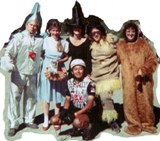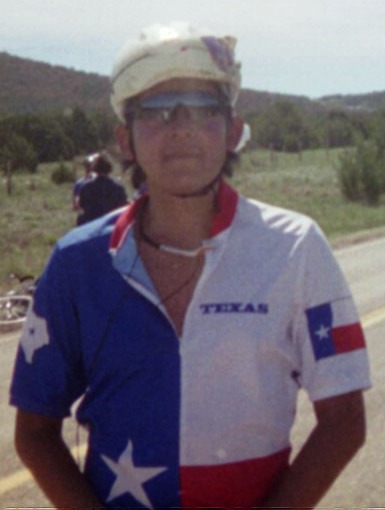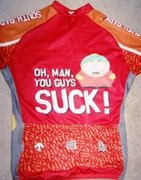
This time it was Paul that brought up Mr L.A. and it took only 16 minutes into the program for the first L.A. remark.
There is really nothing to re-cap. The course was about 18 miles long - a little curvy in the beginning, a short steep hill in the middle and then that's that til the finish line. No real upsets, unless you are Phil and say "just silly" about no GC riders made the top position. I am sure that Phil was being sarcastic, but he was peeved that his rider did not win.
Since I can not really talk about the Time Trial stage.. well there is nothing really to write about. So, with that I am going to write to someone who wants to know more about the Tour de France and get the understanding of the Tour - as general as I can be. Here you go my Democratic friend-o. And this applies to my regular readers that perhaps do not understand or know how the Tour de France plays out.
**** The Following entry is written for Readers who really know nothing of the Tour de France ****
The Tour de France - it is a three week event - or a three week race. Yet, the race is broken up into different stages.
The Tour is race primarily focused in France, with certain stages and portions of the course crossing or being held in neighboring countries. The race course can either go in a clockwise direction or in a counter-clockwise direction through France.
Each stage is an individual race and does count toward the entire Tour de France Race.
Let us begin with the basics. Each team has nine riders. Within each team there is a Team Leader or to put it bluntly - A GC rider (aka General Classification rider.) With the head GC rider the remaining eight riders are domestiques. Basically, the domestiques are there for the GC rider. Period. The domestiques basically help their GC rider and other domestique riders by delivering food and water and in extreme cases give up their bike should the GC rider's bike gets damaged and can not be ridden.
Now, as I mentioned earlier the Tour de France is one big race, but also each stage is an individual race in itself. So, Each stage you have a winner of the stage race. In addition, there are other points that are kept tracked of until the end of the tour when points are totaled up at the end of the Tour.
The Tour de France is made up of several races in itself -An overall winner, An overall sprint winner, an overall young rider (25 yrs or younger) an overall King of the Mountain rider and a daily winner.
Each team must have team colors that are uniform and not be yellow. Though, there have been teams that have worn yellow that was not the official yellow of the Tour. That's a topic for another time.
So, the overall leader (shortest amount of time ridden in the Tour) of the Tour de France at the end of each stage gets to wear the Yellow jersey (aka the Maillot jaune). Basically, he gets to wear the yellow jersey the following day.
The next jersey available is the Green jersey (aka Maillot vert) is a jersey specifically categorized for sprinters. Sprinters - to be general, are riders who can pedal fast in a short distance. If I remember my history I think the Green jersey was brought in for the solely for the Sprinters since they usually have trouble in the mountain stages. I really do not know all about the Green jersey so what am I about to say could be incorrect.
During all stages there are designated points as sprint stage points (usually I think there are three). Sprinters have the chance to win points for coming in first, second and third at those points.
Which in turn, the next jersey is the Polka Dot Jersey that is specifically categorized for hill Climbers. Sorry readers, let me see if I can write this clearly. Hill Climbers are riders that can ride up mountains that are classified or beyond classification in the Tour de France.
In the Tour de France - there are 4 classes of mountains starting from Category 4 (easiest) to Category 1 (very hard). Wait though! Then, there is one that technically can not be categorized and that is called "HC" (beyond classification) which is basically the hardest climb of all.
Now, the Polka Dot Jersey is more commonly known as the King of the Mountain jersey, which is aptly named. During a stage that has any mountain classifications there are points available for the taking at the summit of each classification/beyond classification mountain. Also, at the end of the each stage that has any category mountain climbs the points are accumulated for current grand total and the rider with the highest point accumulation at the end of each stage get to wear the coveted King of the Mountain jersey the following stage.
In my opinion, the Polka Dot Jersey is the most important bike jersey of the whole tour. The King of the Mountain jersey is just so unique and very easy to identify amongst the bike tour racers. Just look for the red Polka Dots against a white jersey. Easy. Today's picture is a shot of the King of the Mountain bike jersey.
Why the most important? Well, basically the rider has earned the King of the Mountain points for the Polka dot Jersey by himself. There may been a little help here and there, but not like the yellow jersey where the the entire teams pedal and does all the work of setting the pace, riding into the wind and acting as a wind deflector for the Yellow jersey rider. What I mean is that all the yellow jersey rider has to do is basically follow in his teammate's slip stream and let them do all the work while the yellow jersey rider does half the workout the rest of the team is doing.
So, should a rider who want the King of the Mountain bike jersey basically needs to go out on his own to earn the right to wear the jersey. Fortunately, the way I see it, is that the rider must earn the points throughout each stage and must make the effort to finish in the top 30 in order to win points in order to have the highest accumulation of points by the end of each stage.
This is sort of tactics is what makes the King of the Mountain jersey the most covets bike jersey during the race.
While all the yellow jersey rider has to do is get to the finish line as the fastest and freshest rider. Sure, each team may or may not want to hold onto the yellow jersey, but in reality the yellow jersey is not all that and a bag of chips. What does matter is who is the fastest at the second to the last bike stage in the Tour de France. Otherwise, the yellow is not as big as Phil and Paul make it to be.
The King of the Mountain bike jersey is the one to have. Anyone can ride up a mountain, but to be the most consistent rider riding up the Pyrenees and the Alps is, as my ex-co-worker would "just so awesome" The rider may have another rider acting as a pacer, which means set the pace of riding up the mountains, but at a certain point the pacer drops off/falls back and then it is totally up to the rider to get the maximum points for the King of the Mountain Bike jersey.
To be Continued...
Until the next time
Daryl Charley
The Fallen Athlete








No comments:
Post a Comment